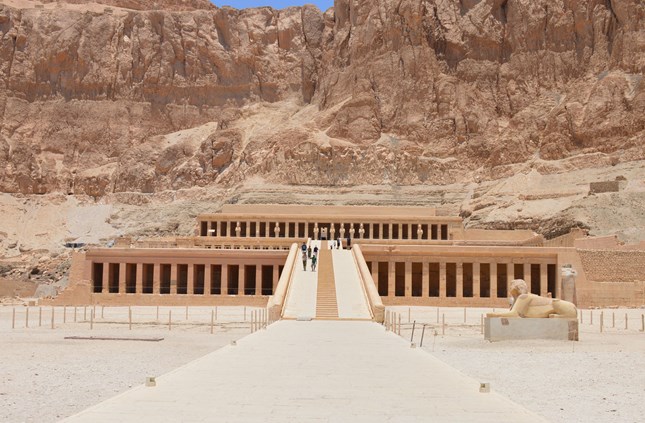Queen Hatshepsut (about 1473 – 1458 BC), the queen who received the title of Pharaoh, built a magnificent temple in Deir el-Bahari, on the west bank in Luxor, facing the Karnak Temple, the main sanctuary of Amun located on the east bank. The Temple of Hatshepsut was named In the ancient Egyptian “Gesro Bridge”, meaning the holiest of sanctities, it was designed by Senmut, who bore the title of chief cupbearer of Amun.
The temple consists of three levels, each containing a row of columns at its end, and in the upper level, an open courtyard is located behind its row of columns, preceded by statues of Hatshepsut in the form of Osiris, the god of the dead.
Jisro Bridge is considered a funerary temple for Queen Hatshepsut, where rituals are held for her after her death when she transforms into the state of Osiris. Open to the sky, dedicated to the sun god “Ra Hor Akhti”, and there is a great place dedicated to Amun, and at the end of the upper courtyard, on the main axis of the temple, a path was cut in the mountain that ends with the Holy of Holies.
The walls of the temple were covered with scenes representing the rituals of the temple, and religious holidays, as well as the transfer of obelisks from the quarries to the Karnak Temple. And its houses, as well as the surrounding environment, in addition to the wealth and exotic animals that the Egyptians brought with them from there, and on the other hand, it was depicted how Hatshepsut became the legitimate king of the country, not only by confirming the appointment of her father Thutmose I as his legitimate heir, but that her father is the god Amun. Himself.

